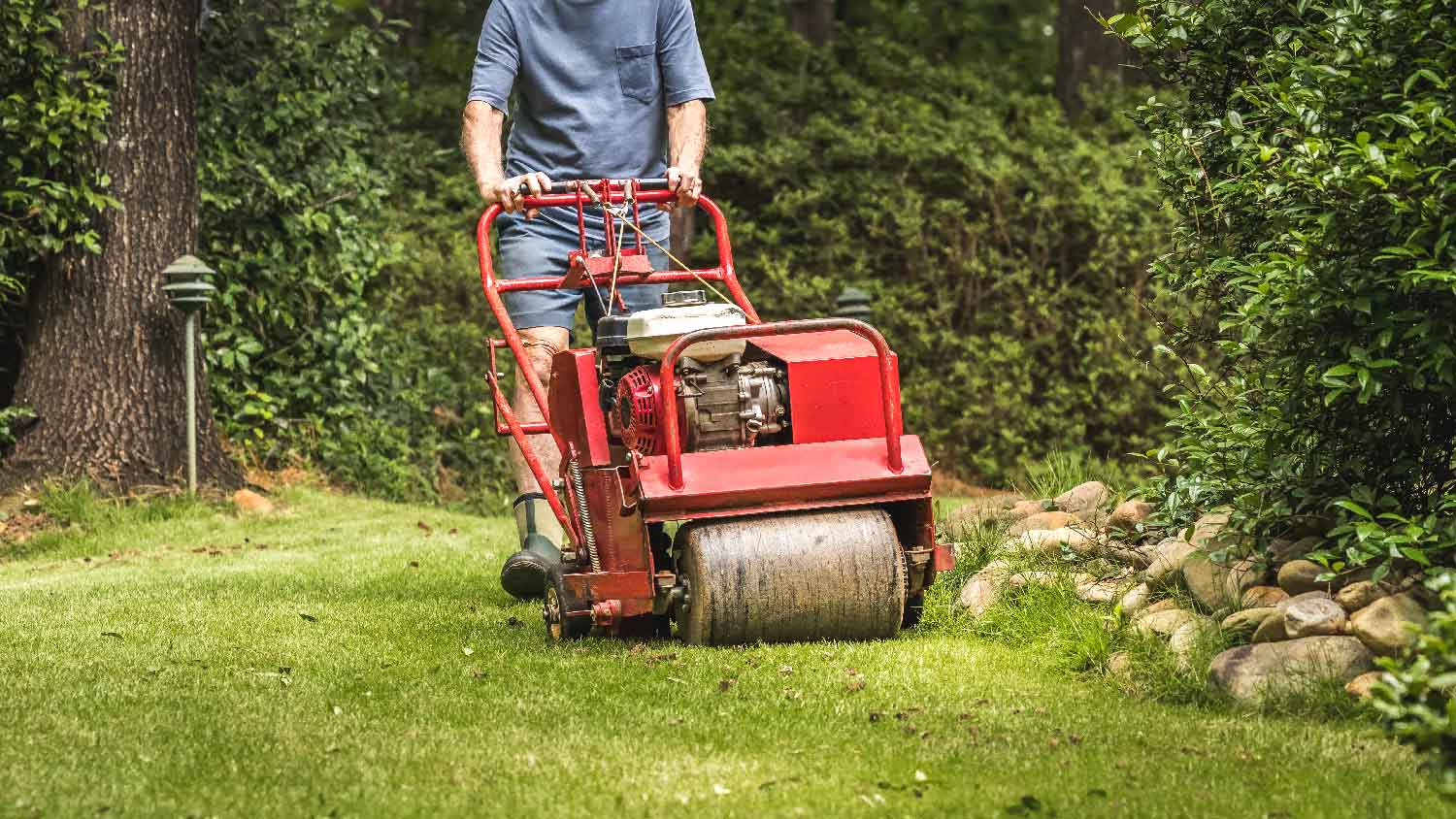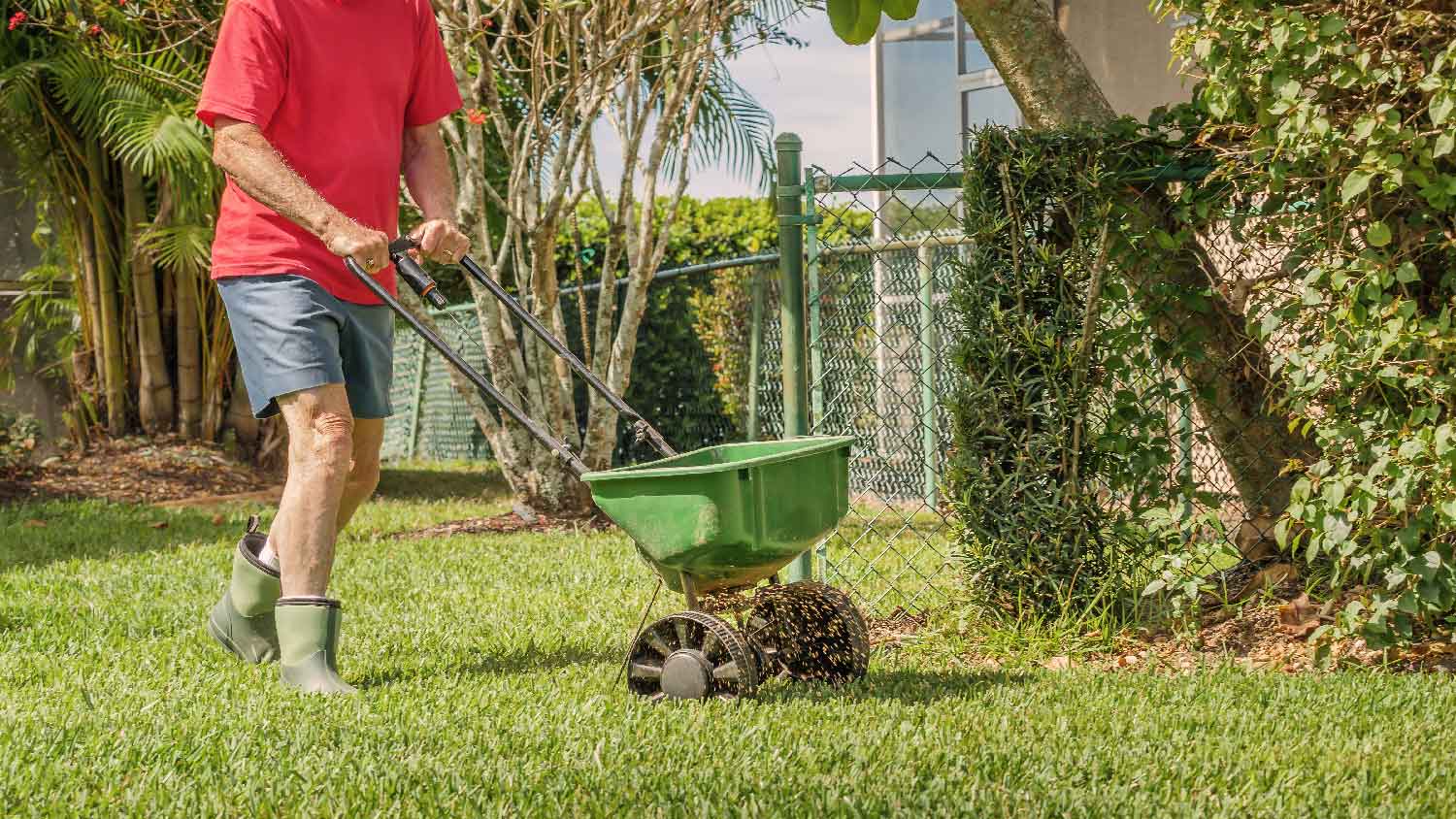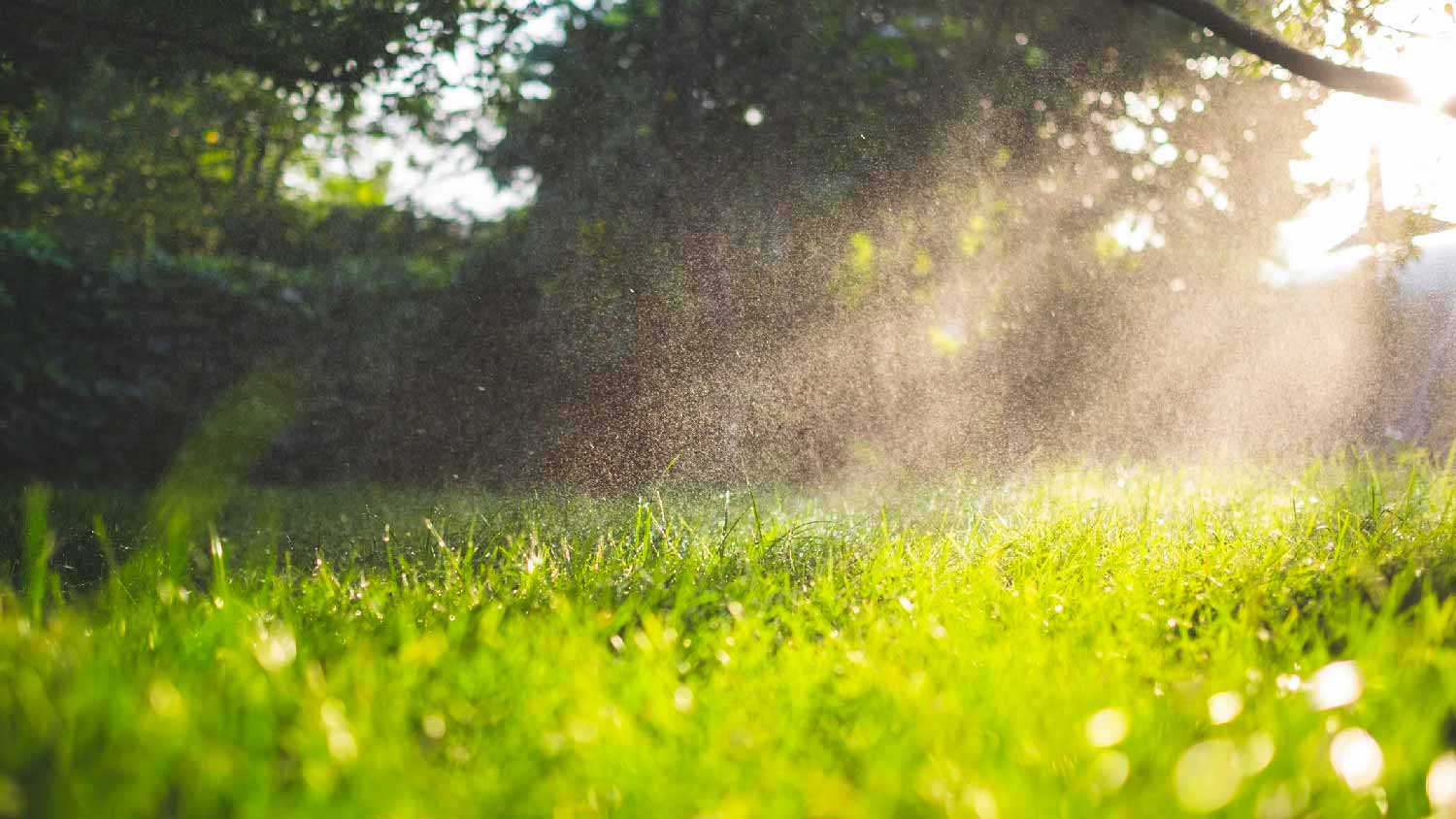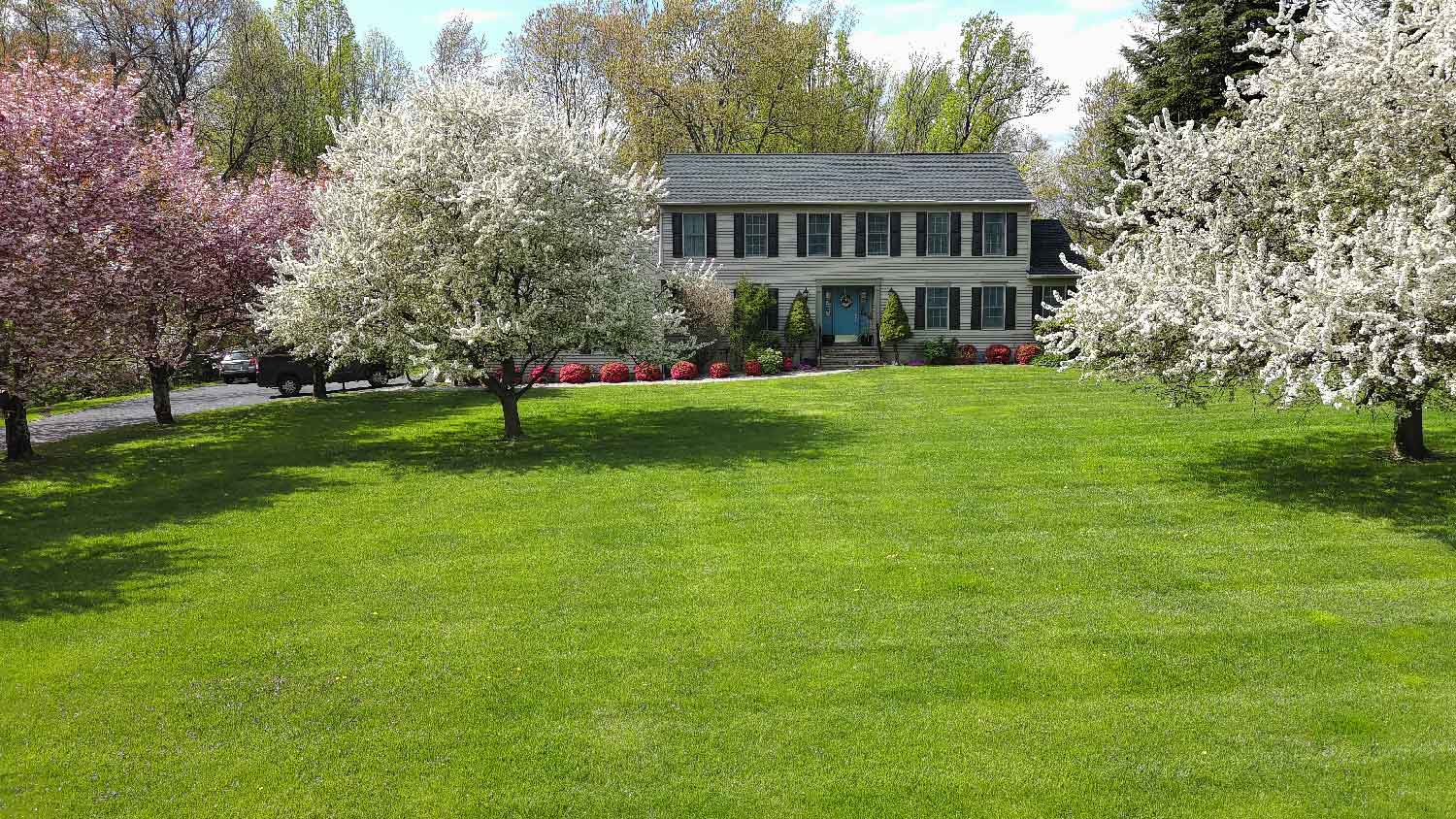
Removing an old lawn is often necessary to plant new grass or build a new outdoor structure. Find out what to budget for your lawn removal cost.
The grass is always greener with well-timed aeration and overseeding


Aerating your yard is when you poke tiny holes throughout it.
These holes allow water, sunlight, and air to seep into the roots, nourishing your plants.
Overseeding is when you plant grass seeds over your existing yard.
You’ll want to aerate and overseed when you notice brown spots in your yard or compacted soil.
It’s too late to overseed or aerate in the later autumn and winter months.
You want to keep your grass looking green and lush. And one of the best ways to do this is to know when it is too late to aerate or overseed your lawn. Our guide covers how aeration and overseeding benefit your yard, when you should do it, and when it is too late to do any lawn maintenance. We’ll also provide lawn care tips to help your grass look great.

What is lawn aeration? Aeration is when you (or a lawn care professional) poke tiny holes all across your lawn. When you do this, you’re breaking up the soil in your lawn, allowing it to breathe and better absorb water, sunlight, and nutrients. This is helpful after the summer months when excessive heat, diseases, hard rain, and frequent activity on your grass, such as mowing or playing ball, compact the soil.
If you don’t know how to aerate a lawn, you can hire a landscaping company to do the work for you. The average lawn aeration cost ranges from $75 to $210, depending on the size of your lawn and the aeration type.
Overseeding is when you plant grass seeds over your existing lawn without tilling or otherwise tearing up the soil. It isn’t uncommon for yards to look worn out or have bare patches after the busy summer months. When you notice brown or bare spots, you can apply grass seed over them to fill up any patchy areas.
Before applying fresh grass seed, there are a few things you’ll want to do. First, remove any thatch that’s built up in your yard. Thatch refers to leaves, roots, and stems that sit on the soil’s surface. Having a yard full of thatch is basically a welcome sign for bugs and other pests to come take up residence, have a feast, and leave your lawn depleted. So, be sure to mow your grass short and use a rake to remove any thatch before applying grass seed over your bare spots.
After applying the seed, add fertilizer and water generously to help the seeds grow. You should also avoid mowing and doing any other activities on that part of the yard until you see growth of 1 to 2 inches.
Knowing when to aerate your lawn is of the utmost importance. Keep in mind that new grass needs around 5 to 6 weeks to become fully acclimated with the rest of your lawn, so don’t aerate during this time. For cold-season lawns, you’ll want to aerate some time between mid-August and mid-September, depending on when you have your first frost of the year. For warm-season grass, you’ll want to overseed and aerate toward the end of the growing season. This means that you should plan your lawn maintenance activities for late summer.
So when is it too late to aerate and overseed? Mid- to late-fall is usually too late to aerate and overseed for the season. This is because your new grass won’t have the time to develop the strong roots it needs to withstand the harsh winter weather. That’s why, if you missed this season, you should set a reminder to do this in late summer/early fall next season. You can always seek out your local lawn aeration specialist for recommended times based on your climate.
If you have dead patches in your yard, you may need to aerate those sections again to penetrate deeper. But never aerate your lawn more than two times.

The benefits of aerating your lawn and overseeding are plentiful. Together, they’ll help your lawn be the happiest, healthiest version of itself. Here are some of the greatest benefits you’ll see after you overseed and aerate:
Weed reduction: As you overseed and aerate, you’re providing air, sunlight, and nutrient pathways for your grass roots to thrive. When you have healthy plants, they’re less susceptible to weed growth.
Strong roots: Since your grass roots have access to the air, nutrients, and light they need, they’ll get stronger and stronger. You’ll notice this most in the fall months when it’s normal for grass growth to slow to a trickle. However, with a robust lawn, your grass continues to grow, preventing diseases, pests, and crabgrass from forming.
Weather resistance: Winter weather can play a harsh role on your lawn. However, with proper aeration and overseeding, your grass will be able to withstand the elements. This means when spring rolls around, you’ll be able to enjoy a lush, green lawn quicker than ever before.
Improved appearance: Your front yard is one of the first things that draws people’s eyes. When you mix in fresh grass with old growth, it’ll give your yard a cleaner, greener, more uniform appearance. This can come in handy when it comes time to sell since curb appeal is a big draw for prospective buyers.

Along with aerating and overseeding, here are other things you can do to keep your lawn looking great:
Use sprinklers: Most grass needs at least an inch of water each week. You’ll want to spread out waterings at least twice a week (and possibly more in the balmy summer months). One of the best ways to ensure an even water distribution is with a sprinkler system. The average sprinkler system cost is $2,540.
Timing is everything: The best time to water grass is the early morning. The reason for this is that it gives your grass time to absorb the water before the sun’s rays evaporate it. If there’s rain in the forecast, hold off on watering, as oversaturation can damage the roots.
Don’t mow wet: When you mow grass wet, it’s more likely to clump. Not only can this make your yard look like it has grass toupées, but it can also impede your mower’s ability to cut evenly. Wet ground also makes it easier for your mower’s wheels to tear up grass roots.
Fertilize: Your grass needs nutrients to grow, and fertilizer supplies this in spades. Not only will it lead to healthier growth, but your grass roots will also be stronger and less susceptible to crabgrass, thatch, and pests. Ideally, you’ll want to apply fertilizer four times a year.
Measure water output: If you install a sprinkler, you’ll want to make sure your lawn receives the water it requires. To do this, set a bowl in an area the sprinkler treats. Next, turn on the sprinkler and wait for 30 minutes. After the time is up, measure the water in the bowl. If it’s less than half an inch, it means you might need to water more. If there’s more than half an inch in the bowl, you may need to water less.
From average costs to expert advice, get all the answers you need to get your job done.

Removing an old lawn is often necessary to plant new grass or build a new outdoor structure. Find out what to budget for your lawn removal cost.

The cost to renovate your lawn depends on the extent of the damage. Our guide will show you how much lawn renovation costs.

How much it costs to rent a lawn aerator depends on what kind you rent and how long you rent it for. Read on for the full details.

Discover the average flowerbed installation cost, key price factors, and tips to save on your landscaping project for accurate planning.

Have you been wondering, “Why is my yard lumpy?” Learn about the likely causes of a bumpy yard and what you can do to flatten it out for good.

If you notice brown patches, thin blades, or weeds on your lawn, you should call a lawn care company. Here’s who to call for lawn problems.